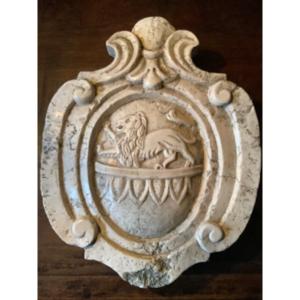Subject: Bust of Marie-Antoinette after Augustin PAJOU
Dimensions: Width 53 cm, height 95 cm,
Signed: no White marble bust, in perfect condition, except for a small chip at the right corner of the base, (see the last photo), marble base that is one with the bust.
Biography:
Augustin PAJOU 1730 / 1809
Augustin Pajou born on September 19, 1730 in Paris and died in the same city on May 8, 1809 is a French neoclassical sculptor. Son of a sculptor-carpenter, Augustin Pajou grew up in Paris, in the Faubourg Saint-Antoine. A student of the sculptor Jean-Baptiste Lemoyne (1704-1778), he won the Prix de Rome in sculpture in 1748. King Louis XV offered him financial support when he studied at the Académie de France in Rome. In 1761, he married Angélique Roumier, daughter of the sculptor Claude Roumier.
Their union produced two children: Flore Catherine Pajou (1764-1841) and Jacques Augustin Catherine Pajou (1766-1828), who was a history and portrait painter. Approved by the Académie royale in Paris in 1759, he was received there in 1760 with his marble of Pluto chaining Cerberus (Paris, Musée du Louvre). He was appointed professor of the Royal Academy of Painting and Sculpture on December 7, 1760 and was promoted to rector on December 6, 1766, confirmed on November 30, 1794.
He succeeded Jean-Marc Nattier and was replaced by Jean-Guillaume Moitte in 1809. Like his friend Charles de Wailly whose house on rue de la Pépinière (now 49, rue La Boétie) he decorated, he was protected by the Marquis de Voyer, Marc-René de Voyer de Paulmy d'Argenson. He thus worked in 1768-1769 on the relief of the barn-stable of the Château des Ormes depicting Cybele receiving all the productions of the Earth, transported by water from Paris. Pajou also participated in the decoration of the Marquis's hotel, known as the Hôtel d'Argenson or Chancellery of Orléans. Following the advice of the great anticomane Julien-David Leroy, promoter of Greek taste, he created the superb bronze and gold caryatids in the hotel's dining room.
Pajou finally worked on the third major project of the Marquis de Voyer and his friend De Wailly: the decoration of the central body of the Château des Ormes between 1768 and 1773 at least, the date of the last attested contact with the Marquis.
Like De Wailly and Voyer, Pajou was a freemason, part of the lodge of the Nine Sisters.
He is buried in the cemetery of Fontenay-aux-Roses. In 1803, Pajou was named a knight of the Legion of Honor by a decree of December 18. In 1896, the City of Paris gave his name to the rue Pajou.
Sold with Invoice / Certificate
Sculpture visible at our gallery in L'Isle sur la Sorgue (France), on weekends.
Free shipping for France And on quote for abroad






















 Le Magazine de PROANTIC
Le Magazine de PROANTIC TRÉSORS Magazine
TRÉSORS Magazine Rivista Artiquariato
Rivista Artiquariato
